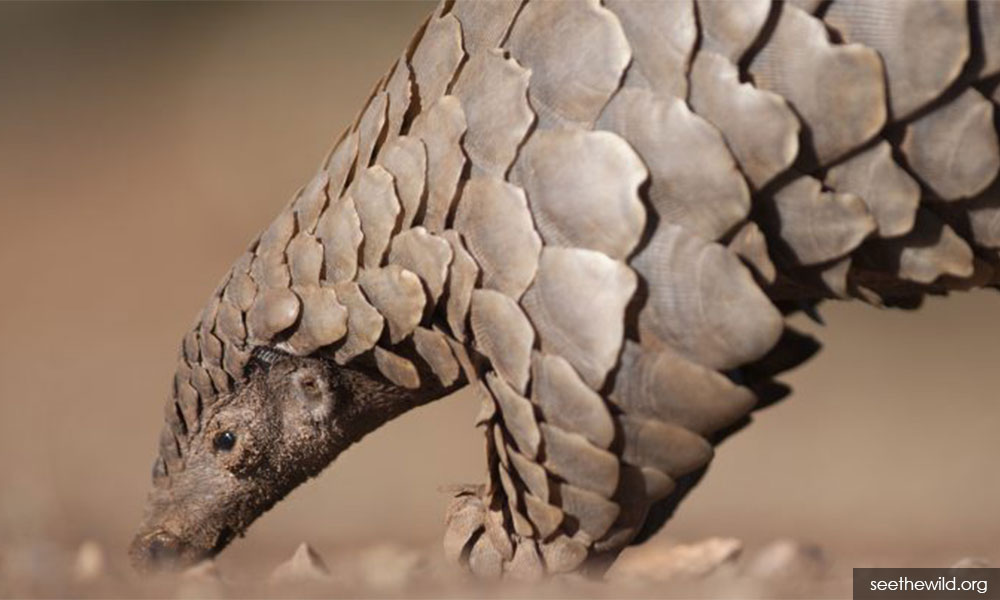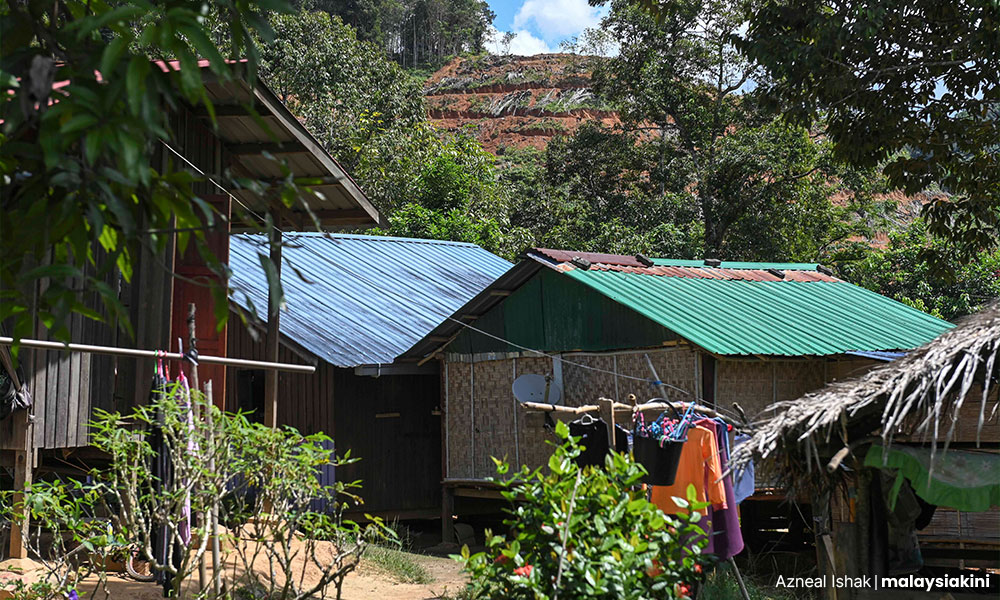LETTER | Saving Malayan Tiger needs multifaceted govt approach
LETTER | The death of a tiger killed on the Plus highway near Gopeng, Perak, on Nov 8 and the four deaths caused by tigers in Kelantan in the last two months have once again brought to the fore the human-tiger conflict and the precarious position of tigers in an increasingly deforested Peninsular Malaysia.
With the Malayan tiger population down to a possible 150 and the prospect of extinction staring in the face of this majestic animal, such news has evoked sympathy for both the striped emblem of the country and the innocent people killed.
It is time for more proactive measures to be taken to deal with this increasing human-tiger conflict.
The tiger population of 150 in the country is too low to survive a risky prospect of extinction that could unfold in a wink of an eye especially now with the added risk of disease and other problems posed by climate change if the government is not able to rectify the situation by doing possibly something radical to save the Malayan tiger.
In India, Russia, China, and North Korea, the tiger populations have started to revive after a near-extinction point. These countries have taken serious radical measures to increase the tiger population.
Recent Indian legislation now outlaws the killing of even small animals such as rats and snakes as depletion of any species can interfere with the long food chain process. This has led to quick revivals of some prey species and the tiger and leopards being at the top of the food chain benefit the most.

Indian forests are thriving with a wide range of animals and, unfortunately, humans have been at the receiving end of the process as many get killed by tigers and leopards not to mention crop damage by elephants that threaten farmers’ livelihoods. The Indian government’s compensation scheme somewhat alleviates the loss to the farmers.
China, despite being well known for consuming bush meat - nowadays mostly confined to imports - is very strict about animal conservation and the success of the Siberian Tiger in China, Russia, and even North Korea can be attributed to punitive laws, more funding, more dedicated teams of game experts, increase in prey animals and caring for the cubs during their vulnerable infancy.
The Indian Royal Bengal Tiger population has grown dramatically to about 3,000 and this can be attributed to the commitment and dedication of the forest rangers as well as tough conservation policies that prohibit poaching, poisoning, injuring, or killing of the animals.
The Indian game rangers have commendable dedication to the tiger conservation programme. They know the identity of individual tigers and give them fanciful names like Maya, Munna, Machli, Collarwali, etc to know them better. The rangers can even reveal much vital info about a particular tiger and its lineage.
They even know the identity/names of a particular tiger’s grandparents and their history stretching back 30-40 years. This info is available due to good record keeping by those involved and helps in tiger conservation.
Regrettably, this cannot be replicated in Malaysia where even sightings of tigers by game rangers are a rarity let alone knowing their identity well or giving them names. Indian monsoon forests are more open, unlike the dense equatorial jungle of our country.
I strongly feel that Malaysia, which is very much worried about the dwindling tiger numbers, needs to seek Indian experience and expertise to save the tiger population from plummeting to a dangerous extinction-threatening low. Malaysia needs to adopt new measures to save the tiger and I have listed some of them.
Warning lights
Road kills can be reduced if not eliminated on highways and major roads by identifying nocturnal animal crossings and placing a flashing green/red light at night on the roadside - just like streetlights - to alert vehicle drivers to slow down and be careful of wild animals crossing the road.
With the increasing availability and efficiency of solar lights, these lights can be placed even in remote areas without electricity or streetlamps.
Many animals, through whose habitats roads have been constructed, are known to cross the roads in search of food or mates and they risk the gauntlet of fast-moving vehicles hitting and killing them.
It was a similar collision that killed a male tiger in its prime on the Plus highway in Gopeng recently. Even elephants do not stand a chance of survival when hit by fast-moving heavy vehicles.
The number of road kills on highways, especially on the East Coast highway, is worrisome. Sometimes, it could be a tigress with her few cubs in tow crossing the road and killing them will be an unimaginable tragedy.

A flashing/revolving green or red light at night at frequent animal crossing spots can prevent or reduce these animal-vehicle accidents. There is no point placing signboards, even reflective ones, at these spots as they cannot be visible from far away to alert drivers.
Increasing prey animals
Prey animals need to be increased for the health of tigers and cubs, and to increase their numbers. Orang Asli living near tiger reserves should be relocated to new settlements and they should be prohibited from hunting wild boar, seladang/gaur, monkeys, pangolin, deer, and other small animals as these are also the prey of the tigers. Depletion of these prey animals could affect the tigers.
Leopards too should be relocated from tiger sanctuaries as they are competitors for the same prey. Leopards are efficient hunters stealthily plunging from low tree branches, killing their prey and quickly carrying the carcass onto the tree.
This enables the leopard to hide its food, unlike the tiger which kills its prey and has to compete with many animals that want to share or steal its meal. The leopard is assured of a steadier supply of food, unlike the tiger in the Peninsular forests.
Nowhere in the world have the leopards ever come close to extinction and in fact, they are thriving in many countries as their more successful hunting skills and storing of food gives them the edge. Leopards in tiger sanctuaries should be trapped and relocated to other jungles to better the chances of a tiger revival in numbers.
Increasing prey animals is the best hope for tiger revival. One finds a lot of monkeys causing a nuisance in suburban areas and they can be trapped and released in tiger sanctuaries. Others like the monitor lizard, pangolin, civet cat, and Malayan tapir could also be part of the food chain that benefits the tiger.

Fruit trees and other crops like bananas, tapioca, and yam need to be propagated in the forests as these also help in the food chain that will become food for wild boars, monkeys, and others.
Many crops like tapioca, yam, and bananas take root easily in our hot and wet climate. Even if they are just thrown onto the ground, they can somehow spread and survive and become food for animals like wild boar.
The reduction of monkeys, which are mostly hunted by the Orang Asli, has led to less propagation of fruit trees in the forests. The Indian gaur or seladang population needs to be increased also as these tough bovines, especially the young and old, can become prey for tigers.
The biggest threat facing the tiger is not poaching or even loss of habitat but the lack of prey animals in the local dense forests unlike the savanna grasslands of Africa or the open monsoon forests in India which allow for the abundant growth of grass, shrubs, weeds, and plants.
Specialist team
There is a need to set up a specialist team comprising wildlife rangers, armed forces personnel, tiger experts, and Orang Asli. These people need to go deep into forests to do research, set up cameras, and tents for a longer stay, tranquillise tigers to know about their health, and collect other vital info.
If there are lactating tigresses, then food such as animal carcasses like cattle and wild boars can be air-dropped near the den. Cubs of lactating tigresses are very vulnerable to many dangers including being killed by male tigers.
If the food supply is available nearby, the cubs will be out of danger and well protected by their mother.
The specialist force can be rappelled down from helicopters into remote places to collect various data about the tigers. A lot of hard work needs to be done to help the tiger numbers grow, and it is no easy task.
Budget and other govt efforts
A special annual budgetary allocation of about RM50 - 100 million should be set aside for wildlife management and conservation, apart from corporate sponsorships.
This should be a separate allocation and should be mixed with the allocations for ministries or other development expenses.
An accurate report about wildlife and conservation should be presented to Parliament yearly and MPs should take a great interest in reading the report.
The government can also sponsor a biennial tiger conservation conference to get inputs from worldwide experts, which will benefit local efforts.
If necessary villages near tiger reserves need to be relocated as both humans and free-roaming domestic animals are tempting targets for tigers.

I recall a major initiative by the late former Indian prime minister Indira Gandhi, who was confronted with the perennial problem of the human-lion conflict in the Gir Asiatic lion sanctuary in Gujarat state.
She took the bold step of relocating all the peripheral villages despite vehement protests by the villagers. Since then, the number of Asiatic lions in the sanctuary, now officially called the Gir National Park, has increased tremendously.
The government needs to consider relocating villages, especially Orang Asli communities, if tiger attacks persist. Should the tiger population increase in the years to come, there will be a more intense human-tiger conflict unless the villagers are relocated as a long-term measure for their own safety.
The government needs to provide an economic lifeline by providing some subsidies and assistance to stop them from hunting potential tiger prey except permitting the hunting of birds or fishing rights.
Rubber, oil palm, and other smallholdings of villagers around tiger reserves need to be cleared of thick undergrowth by owners to prevent fatal tiger ambushes.
Hunting
Previously, it was thought that tigers attacked humans only if they were too old or injured to hunt their natural prey. Nowadays, tigers are on the lookout for humans and domesticated animals.
Hunting licenses should not be given to hunt wild boar and other animals even if these are numerous and causing a nuisance or economic loss. More of these prey animals means a plentiful supply of food for the tiger.
The government needs to have a generous compensation scheme and reports about these matters need to be highlighted in Parliament. MPs need to show more interest in wildlife and conservation.
Hunting using dogs must be strictly prohibited. Humans have other food and meats for consumption and do not need bush meat.
Poaching has been appreciably reduced by punitive laws and strict enforcement by the Department of Wildlife and National Parks Peninsular Malaysia (Perhilitan), and the security forces.
Another major threat is climate change. It cannot be predicted how it is going to affect wild animals and their habitats worldwide.
In the meantime, the Malayan Tiger needs to get all the attention it deserves from the government and the people. Losing the tiger to extinction will mean that we have not only lost the proud symbol of the country but also the soul of the nation.
The views expressed here are those of the author/contributor and do not necessarily represent the views of Malaysiakini.
RM12.50 / month
- Unlimited access to award-winning journalism
- Comment and share your opinions on all our articles
- Gift interesting stories to your friends
- Tax deductable
